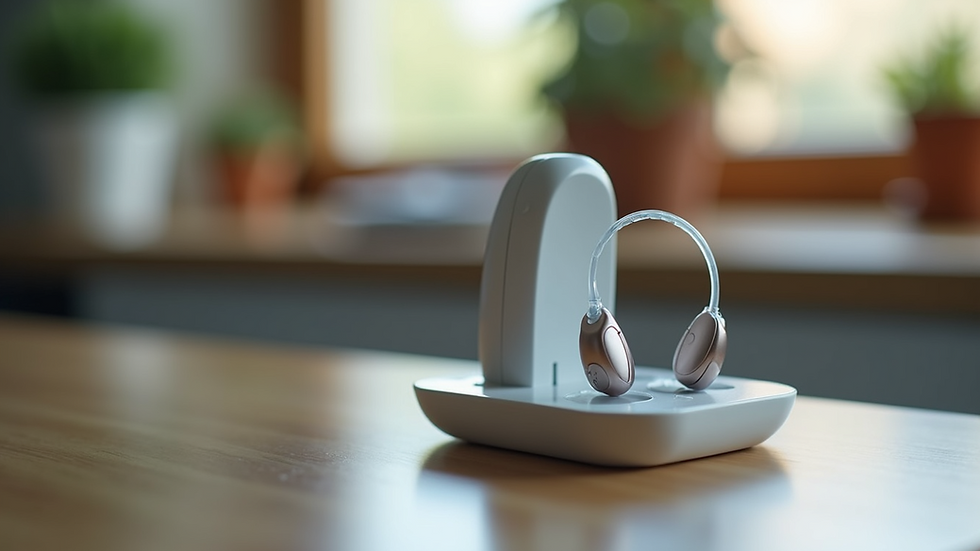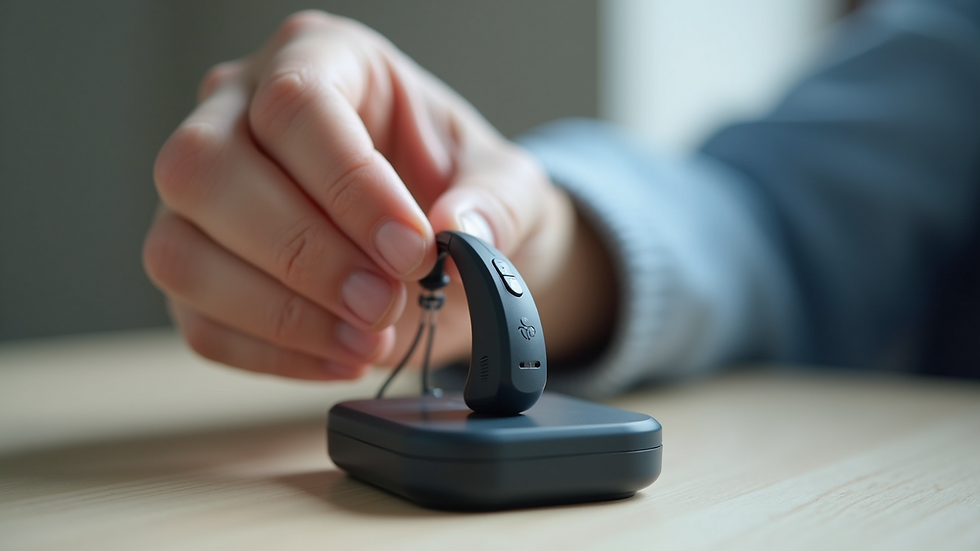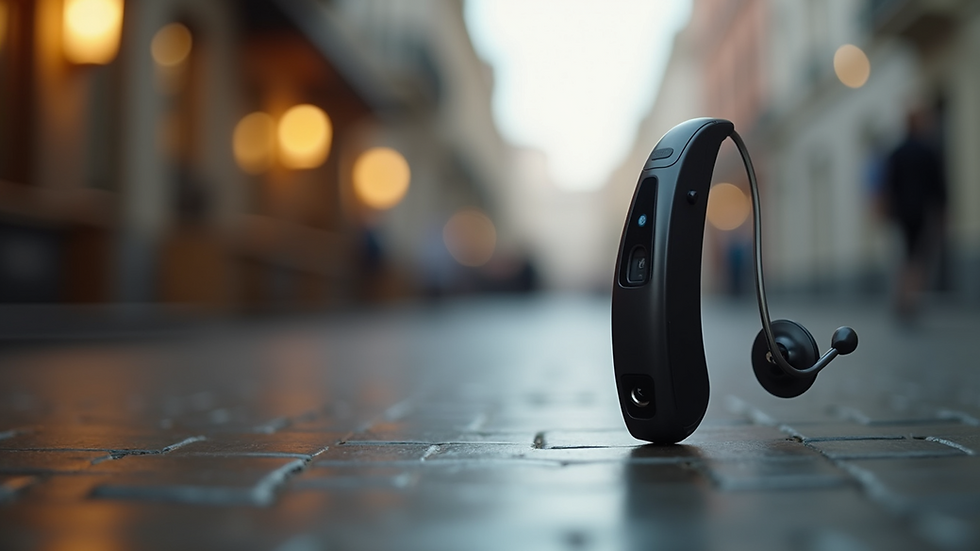The Benefits of Rechargeable Hearing Technology
- Aug 5
- 3 min read
Hearing technology has evolved significantly over the years, making life easier and more enjoyable for people with hearing loss. One of the most exciting advancements is rechargeable hearing technology. This innovation offers a range of benefits that improve convenience, sustainability, and overall user experience. In this article, we will explore the key advantages of rechargeable hearing aids and why they are becoming the preferred choice for many users.
Why Choose Rechargeable Hearing Technology?
Rechargeable hearing technology eliminates the need for disposable batteries, which can be a hassle to replace frequently. Instead, these hearing aids come with built-in batteries that can be recharged daily, much like a smartphone or other portable electronic device.
Key benefits include:
Ease of use: No more fumbling with tiny batteries or worrying about running out of power during the day.
Cost savings: Over time, rechargeable batteries reduce the expense of buying replacement batteries.
Environmental impact: Rechargeable hearing aids help reduce battery waste, making them a greener option.
For example, a user can simply place their hearing aids in a charging dock overnight and wake up to fully powered devices ready for the day ahead. This convenience is especially valuable for those with dexterity challenges or busy lifestyles.

How Rechargeable Hearing Aids Improve Daily Life
Rechargeable hearing aids offer practical advantages that enhance everyday living. One of the biggest improvements is the reliability of power throughout the day. Users no longer need to carry spare batteries or worry about sudden power loss.
Additionally, many rechargeable hearing aids feature fast charging capabilities. A quick 30-minute charge can provide several hours of use, which is perfect for unexpected situations when a full charge is not possible.
Practical tips for maximizing rechargeable hearing aids:
Charge every night: Make it a habit to charge your hearing aids while you sleep.
Keep the charger accessible: Place the charging station in a convenient location.
Monitor battery status: Use the hearing aid app or indicators to check battery levels regularly.
These small habits ensure that your hearing aids are always ready to perform at their best.

Exploring the Latest Innovations in Rechargeable Hearing Technology
The technology behind rechargeable hearing aids continues to advance rapidly. Modern devices are smaller, more powerful, and offer longer battery life than ever before. Some models even include wireless charging options, eliminating the need for cables.
Manufacturers are also integrating smart features such as Bluetooth connectivity, allowing users to stream audio directly from their phones or other devices. This integration enhances the overall hearing experience and adds convenience.
For those interested in tailored solutions, custom rechargeable hearing aids provide personalised fit and performance. These devices are designed to meet individual hearing needs while offering the benefits of rechargeable technology.

Environmental and Economic Advantages of Rechargeable Hearing Aids
Switching to rechargeable hearing aids is not only beneficial for users but also for the environment. Disposable batteries contribute to landfill waste and contain harmful chemicals. Rechargeable batteries reduce this waste significantly.
From an economic perspective, although rechargeable hearing aids may have a higher upfront cost, they save money in the long run by eliminating the need for frequent battery purchases. This makes them a cost-effective choice over time.
Environmental and economic benefits include:
Reduction in battery waste and pollution
Lower ongoing costs for battery replacements
Less frequent trips to purchase batteries
By choosing rechargeable hearing technology, users contribute to a more sustainable future while enjoying financial savings.
Tips for Maintaining Your Rechargeable Hearing Aids
Proper care and maintenance are essential to ensure your rechargeable hearing aids last as long as possible and perform optimally. Here are some actionable recommendations:
Keep them dry: Avoid moisture exposure by removing hearing aids before showering or swimming.
Clean regularly: Use a soft, dry cloth to clean the devices and charging contacts.
Store safely: Always place hearing aids in their charging station when not in use.
Avoid extreme temperatures: Keep devices away from heat sources or freezing conditions.
Following these simple steps will help maintain battery health and device functionality, ensuring you get the most out of your investment.
Rechargeable hearing technology represents a significant step forward in hearing aid design. It offers unmatched convenience, cost savings, and environmental benefits. Whether you are new to hearing aids or considering an upgrade, exploring rechargeable options can greatly enhance your hearing experience. With ongoing innovations and personalised options like custom rechargeable hearing aids, the future of hearing technology looks bright and accessible for everyone.





Comments